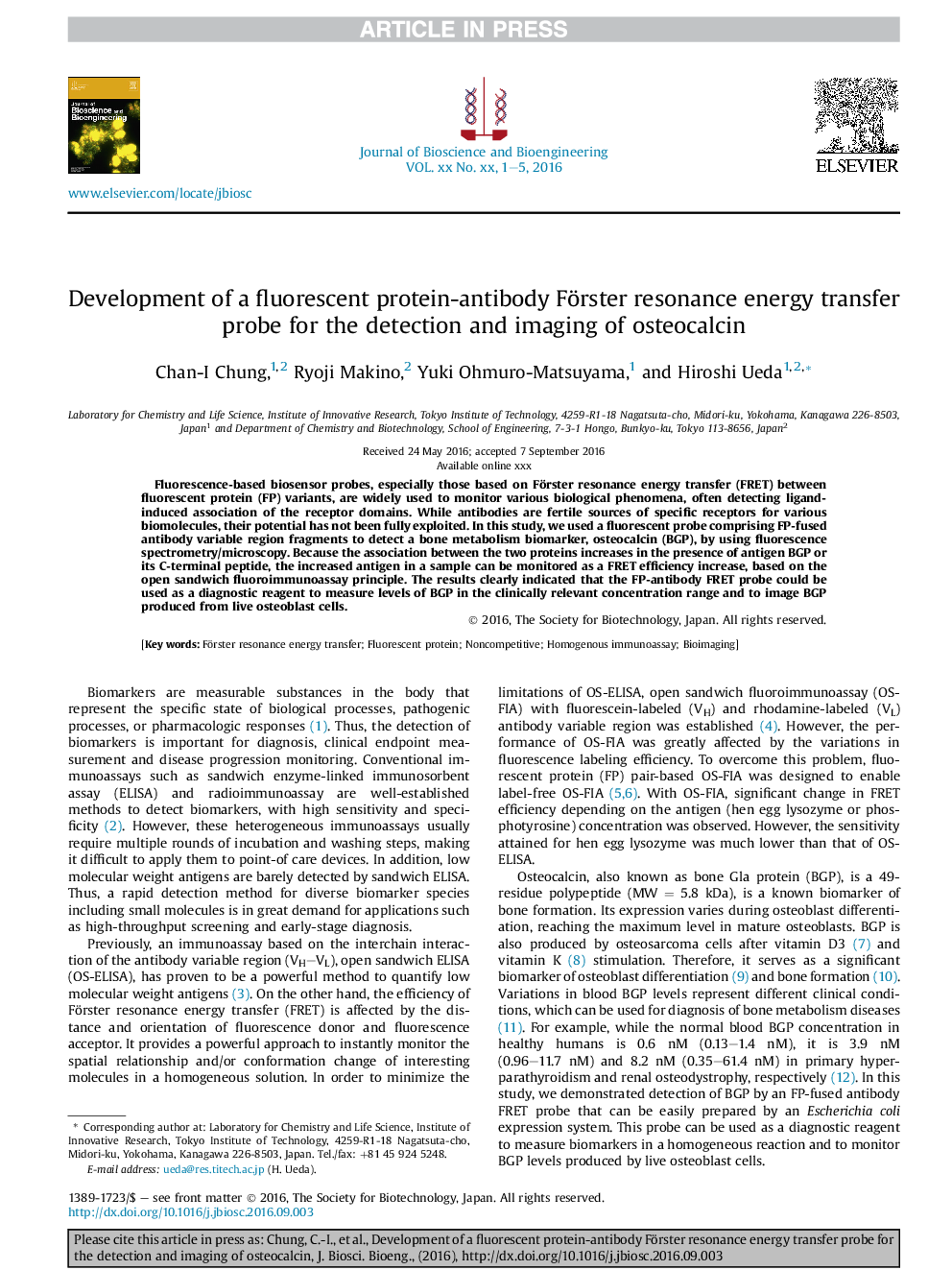| Article ID | Journal | Published Year | Pages | File Type |
|---|---|---|---|---|
| 4753439 | Journal of Bioscience and Bioengineering | 2017 | 5 Pages |
Abstract
Fluorescence-based biosensor probes, especially those based on Förster resonance energy transfer (FRET) between fluorescent protein (FP) variants, are widely used to monitor various biological phenomena, often detecting ligand-induced association of the receptor domains. While antibodies are fertile sources of specific receptors for various biomolecules, their potential has not been fully exploited. In this study, we used a fluorescent probe comprising FP-fused antibody variable region fragments to detect a bone metabolism biomarker, osteocalcin (BGP), by using fluorescence spectrometry/microscopy. Because the association between the two proteins increases in the presence of antigen BGP or its C-terminal peptide, the increased antigen in a sample can be monitored as a FRET efficiency increase, based on the open sandwich fluoroimmunoassay principle. The results clearly indicated that the FP-antibody FRET probe could be used as a diagnostic reagent to measure levels of BGP in the clinically relevant concentration range and to image BGP produced from live osteoblast cells.
Related Topics
Physical Sciences and Engineering
Chemical Engineering
Bioengineering
Authors
Chan-I Chung, Ryoji Makino, Yuki Ohmuro-Matsuyama, Hiroshi Ueda,
